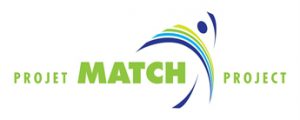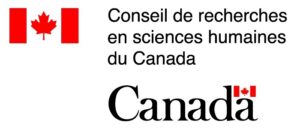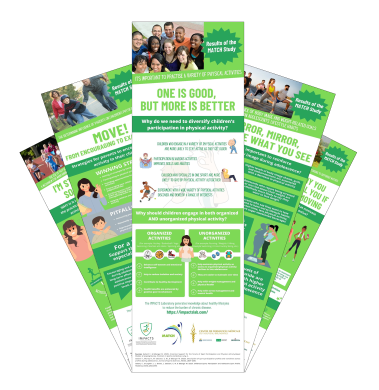Description
 The “Monitoring Activities of Teenagers to Comprehend their Habits” (MATCH) study aims to better understand how sport and physical activity participation evolve during childhood and adolescence. MATCH is unique given it collects more detailed information on sport and physical activity than other studies and does so on a greater frequency on a long period of time. 936 students completed self-report questionnaires every four months from grade 5 or 6 until the end of grade 12. These same participants are now asked to complete self-report questionnaires every year.
The “Monitoring Activities of Teenagers to Comprehend their Habits” (MATCH) study aims to better understand how sport and physical activity participation evolve during childhood and adolescence. MATCH is unique given it collects more detailed information on sport and physical activity than other studies and does so on a greater frequency on a long period of time. 936 students completed self-report questionnaires every four months from grade 5 or 6 until the end of grade 12. These same participants are now asked to complete self-report questionnaires every year.
To complement all of this information, MATCH also has a sub-sample of 23 participants who take part in individual interviews annually. Parents (or guardians) of students took part in a telephone-administered questionnaire in the first year of the study. Finally, a school environment assessment was conducted for every school in collaboration with school representatives at two different times.
The frequent follow-ups enable characterising behaviours during periods of important changes and development. Results to date have identified predictors of participation in different types of sports at the level of the individual (i.e., personal attributes, psychological characteristics), the social environment (i.e., behaviours of peers, support from parents), and the physical environment (i.e., rurality, access to infrastructure). MATCH data also indicate that participation in different types of sports is differentially associated with different outcomes, including quality of life, psychological wellbeing, and future participation in sports.

Objectives
- Explore the physical activity-related experiences of participants in various types of physical activity.
- Better understand the process of maintaining, increasing, and decreasing physical activity during the transitions from childhood to adolescence to adulthood.
- Describe the association between theory driven factors and adherence to different types of physical activity in youth and young adults;
- Test if change in theory-based factors is associated with change in level of participation in different types of physical activity.
Test if the association between theory-based factors and change in different types of physical activity is mediated by other factors. - Test whether there are cumulative, timing or threshold effects of exposure to sports during childhood and adolescence on the likelihood of participating in sports in early adulthood.
- Examine whether there are cumulative and timing effects of exposure to social transitions and life stresses on the likelihood of participating in sports in early adulthood.
- Investigate whether there is an association between exposure to sports during childhood and adolescence and markers of resilience during the transition to post-secondary education or the workforce.
- Assess associations between infrastructure, programming or events provided by post-secondary institutions and recreation departments and the maintenance or uptake of sport participation in early adulthood.
- Test associations between usages of technology developed to support physical activity and the maintenance or uptake of sport participation in early adulthood.
Team
Principal Investigator: Mathieu Bélanger
Co-investigator: Jennifer Brunet, Isabelle Doré, François Gallant, Katie Gunnell, Jennifer O’Loughlin, Catherine Sabiston et Marie-Pierre Sylvestre
Research professional: Julie Dufresne
Students (past and present): Emilie Beaulieu (MD-Sherbrooke), Marie-Claude Lavigne-Albert (MD-Sherbrooke), Marie-Andrée Giroux (MD-Sherbrooke), Anika Boucher (MD-Sherbrooke), Julie Goguen Carpenter (MSc-Sherbrooke), Jason MacKenzie (MSc-Sherbrooke), Erin Wing (MSc-Ottawa), Stéphanie Ward (MSc-Sherbrooke), François Gallant (MSc-Sherbrooke), Teodora Riglea (MSc-Montréal), Marie-Ève Michaud (MSc-Sherbrooke), Jean-François Clément (MSc-Sherbrooke), Chloé Drapeau (MSc-Montréal), Kristy Smith (PhD-Windsor), Véronique Thibault (PhD-Sherbrooke), François Gallant (PhD-Sherbrooke)
Postdoctoral researchers (past and present): Katie Gunnell (Ottawa), Patrick Abi Nader (Sherbrooke), Isabelle Doré (Toronto), Jodie Stearns (Ottawa), Radhouene Doggui (Sherbrooke), Ross Murray (Toronto)
Key Findings
Since 2011, MATCH data have been at the heart of 12 graduate student theses and 6 postdoctoral projects. Analyses conducted by researchers and students have led to the publication of over 30 scientific papers, 67 presentations at scientific conferences and 16 presentations where MATCH researchers were guest lecturers.
The following infographics present the main findings of the MATCH study:
-
- The importance of a variety of physical activities
- The determining effect of parents on young people’s physical activity levels
- The impact of body image and weight-related intentions on adolescents’ lifestyle habits
- Adolescents’ use of physical activity: a mechanism for maintaining mental health and managing stress
- Participation in physical activity varies according to different motives
Policy Implications
Given the finding that children who do not participate in sports during childhood are at elevated risk of not participating in physical activity later on, strategies are needed to find ways to involve all children in developmentally appropriate sporting activities. These could include after school programs and noncompetitive sports.
People working with children in sports should understand that involvement in sport sampling (i.e., taking part in a wide variety of different physical activities) during childhood is preferable to sport specializing (i.e., having a high level of participation in only one activity) since it reduces the risk of dropping out of sport.
We found that youth turn to unorganized sport participation as a mechanism to deal with life stresses (i.e. breakups). Therefore, more societal efforts should be implemented to facilitate youth participation in unorganized sports. Only about 1/3 of Canadian youth participate in unorganized sports regularly, such that many may be missing out on the benefits associated with these. Additionally, as 3/4 of Canadian youth participate in organized sports, it may be beneficial to equip sport programs with the skills required to assist youth dealing with life stresses.
Recognizing the importance attributed by children to enjoyment motives (having fun), sport practitioners, schools and communities hoping to increase participation in organized sports should aim at making their activities interesting, fun, and stimulating.
To increase participation in group-based sports, interventions may need to incorporate consideration of competence motives by reinforcing skill development and enhanced performance and offering realistic and attainable challenges through sport participation opportunities.
To increase satisfaction of psychological needs (i.e. competence, relatedness and autonomy), which in turn can increase moderate-to-vigorous physical activity among youth, schools and sport organizations should: 1- Provide opportunities for youth to practice new skills with the help of a sport professional and encourage them to keep practicing these skills in order to become more at ease and feel more confident (competence), 2- Allow students to choose activities according to their interests. This will group together youth with similar objectives and facilitate development of relationships (relatedness), and 3- Offer opportunities for youth to choose the activity in which they want to engage without questioning their motives or trying to control the outcomes (autonomy).
School environment was strongly related to sport participation, and most specifically to participation in organized sports. Schools and school boards could work together to implement active commuting programs, such as “Walking school bus” programs, active transportation days, and modify policies or create infrastructures that promote active commuting to school, such as allowing skateboards on school premises, offering bike racks, and ensuring that crossing guards are present at pedestrian crossings.
Parents’ sport participation may have an influence on types of activities practiced by youth, especially for activities that are relatively less popular among youth. Communities and sport organizations should offer more opportunities for parents to be active such as adult sports teams and leagues as a strategy for increasing sport participation in youth.
Internal barriers to sports appear to have a larger influence on MVPA than external barriers. Programs aimed at increasing sport participation in youth should be discussed with youth so that their internal barriers are taken into consideration prior to implementation.
Publications
| Articles | Savoirs URL |
| Thibault, V., Gallant, F., Sylvestre, M.P., Drapeau, V., Doré, I., Sabiston, C., Bélanger, M. (2023). Longitudinal associations between body-related self-conscious emotions and weight control status during adolescence. Journal of Adolescent Health. | http://hdl.handle.net/11143/20808 |
| Gallant, F., Hebert, J., Thibault, V., Mekari, S., Sabiston, C.M., Bélanger, M. (2023). Puberty timing and relative age as predictors of physical activity discontinuation during adolescence. Scientific Reports | http://hdl.handle.net/11143/20809 |
| Sabiston, C.M., Doré, I., Lucibello, K.M., Pila, E., Brunet, J., Thibault, V., Bélanger, M. (2022). Body image self-conscious emotions get worse throughout adolescence and relate to physical activity behavior in girls and boys. Social Science & Medicine, vol. 315, December 2022, article 115543, 9 p. | http://hdl.handle.net/11143/20812 |
| Gallant, F., Murray, R.M., Sabiston, C.M., Bélanger, M. (2022). Description of sport participation profiles and transitions across profiles during adolescence. Journal of Sports Sciences, vol. 40, no 16, p. 1824-1836 | http://hdl.handle.net/11143/20810 |
| Smith, K. L., Bélanger, M., Chittle, L., Dixon, J. C., Horton, S., & Weir, P. L. (2022). Does Relative Age Influence Organized Sport and Unorganized Physical Activity Participation in a Cohort of Adolescents? Sports, 10(7), 97. | http://hdl.handle.net/11143/20792 |
| Doggui, R., Ward, S., Johnson, C., Bélanger, M. (2022). Trajectories of beverage consumption during adolescence. Appetite. | http://hdl.handle.net/11143/20794 |
| Doré I, Thibault V, Sylvestre MP, Sabiston CM, O’Loughlin J, Abi Nader P, Romain AJ, Brunet J, Bélanger M. (2022). Physical activity motives have a direct effect on mental health, Scandinavian Journal of Medicine & Science in Sports. | http://hdl.handle.net/11143/20811 |
| Stearns, J., Bélanger, M., O’Loughlin, J., Brunet, J. (2022). Change in the social context of physical activity across adolescence and its association with moderate-to-vigorous intensity physical activity. Psychology of Sport and Exercise. | http://hdl.handle.net/11143/20800 |
| Abi Nader, P., Gaudet, J., Brunet, J., Gunnell, K., Dore, I., Sabiston, C.M., Boudreau, J., Bélanger, M. (2021). Associations between Physical Activity Motives and Trends in Moderate-to-Vigorous Physical Activity Among Adolescents Over Five Years. Journal of Sports Sciences. 1-14. | http://hdl.handle.net/11143/20798 |
| Doggui, R., Ward, S., Johnson, C., Bélanger, M. (2021). Trajectories of eating behaviour changes during adolescence. Nutrients, Volume 13, Issue 4, | http://hdl.handle.net/11143/20793 |
| Doggui, R., Gallant, F., Bélanger, M. (2021). Parental control and support for physical activity predict adolescents’ moderate to vigorous physical activity over five years. International Journal of Behavioral Nutrition and Physical Activity, 18(1), 1-10. | http://hdl.handle.net/11143/20796 |
| *Riglea, T., Dore, I., O’Loughlin, J., Bélanger, M., Sylvestre, M.P. (2021). Contemporaneous trajectories of physical activity and screen time in adolescents. Applied Physiology, Nutrition, and Metabolism. 2021 Jun;46(6):676-684. | http://hdl.handle.net/11143/20799 |
| Gallant, F, Thibault, V., Hebert, J., Gunnell, K., Bélanger, M. (2020). One size does not fit all: Identifying clusters of physical activity, screen time, and sleep behaviour co-development from childhood to adolescence. International Journal of Behavioral Nutrition and Physical Activity. 17, Article number: 58. | http://hdl.handle.net/11143/20773 |
| Doré, I., Sylvester, B., Sylvestre, MP., Sabiston, C., O’Loughlin, J., Brunet, J., Bélanger, M. (2020). Mechanisms underpinning the association between group sport participation and mental health in adolescence: A 6-year study. International Journal of Behavioral Nutrition and Physical Activity. 17, 9. | http://hdl.handle.net/11143/20795 |
| Larouche, R., Gunnell, K., Bélanger, M. (2019) Seasonal variations and changes in school travel mode from childhood to late adolescence: a prospective study in New Brunswick, Canada. Journal of Transport & Health. 12, 371-378. | http://hdl.handle.net/11143/20790 |
| Bélanger, M., Gallant, F., Abi Nader, P., O’Loughlin, J., Sabiston, C., Doré, I., Gunnell, K., Larouche, R., Sylvestre, MP. (2019). Physical activity mediates the relationship between outdoor time and mental health. Preventive Medicine Reports. 36. | http://hdl.handle.net/11143/20774 |
| Doré, I., Sabiston C., Sylvestre, MP., Brunet, J., O’Loughlin, J., Abi Nader, P., Gallant, F., Bélanger M. (2019). Years participating in sports during childhood predicts mental health in adolescence: A 5-year longitudinal study. Journal of Adolescent Health, 64, 790-796. | http://hdl.handle.net/11143/20775 |
| Brunet, J., Gaudet, J., Wing, E., Bélanger, M. (2019). Parents’ participation in physical activity predicts maintenance of some, but not all types of physical activity in offspring during early adolescence: A prospective longitudinal study. Journal of Sport and Health Science. | http://hdl.handle.net/11143/20772 |
| Abi Nader, P., Ward, S., Eltonsy, S., Bélanger, M. (2018). The Impact of Life Stresses on Physical Activity Participation during Adolescence: a 5-Years Longitudinal Study. Preventive Medicine. 116:6–12 | http://hdl.handle.net/11143/20788 |
| Gunnell K. E., Brunet, J., Bélanger, M. (2018) Out with the old, in with the new: Assessing change in screen time when measurement changes over time. Preventive Medicine Reports | http://hdl.handle.net/11143/20776 |
| Gallant, F., O’Loughlin, J., Brunet, J., Sabiston, C., Bélanger, M. (2017). Childhood Sport Participation Profile Predicts Adolescent Sport Profile. Pediatrics. | http://hdl.handle.net/11143/20815 |
| Gunnell, K. E., Brunet, J., Sabiston, C. M., Bélanger, M. (2016). Linking psychological need satisfaction and physical activity to health-related quality of life during adolescence: A test of direct, reciprocal, and mediating effects. Journal of Sport & Exercise Psychology, 38, 367-380. | http://hdl.handle.net/11143/11261 |
| Brunet J., Gunnell, K. E., Teixeira, P., Sabiston, C. M., Bélanger, M. (2016). Should we be looking at the forest or the trees? Overall psychological needs satisfaction and individual needs as predictors of physical activity. Journal of Sport & Exercise Psychology, 38, 317-330. | http://hdl.handle.net/11143/20797 |
| Wing, E.K., Bélanger, M., Brunet, J. (2016). Linking Parental Influences and Youth Participation in Physical Activity In- and Out-of-School: The Mediating Role of Self-Efficacy and Enjoyment. American Journal of Health Behavior, 40(1): 31-37. | http://hdl.handle.net/11143/20816 |
| Gunnell, K. E., Brunet, J., Bélanger, M. (2015). A Tale of Two Models: Changes in Psychological Need Satisfaction and Physical Activity over 3 Years. Health Psychology. | http://hdl.handle.net/11143/13226 |
| Goguen Carpenter, J., Bélanger, M., Xhignesse, M., Ward, S., Caissie, I., Sabiston, C., O’Loughlin, J. (2015). Association between physical activity motives and type of physical activity in children. International Journal of Sport and Exercise Psychology,1-15. | http://hdl.handle.net/11143/11276 |
| MacKenzie, J., Brunet, J., Boudreau, J., Iancu, H.D., Bélanger, M. (2015). Does Proximity to physical activity infrastructures predict maintenance of organized and unorganized physical activities in youth? Preventive Medicine Reports, 2: 777-782. | http://hdl.handle.net/11143/20789 |
| Ward, S., Bélanger, M., Goguen, J., Caissie, I., Vanasse, A., Donovan, D. (2015). Association between school policies and built environment, and youth’s participation in various types of physical activities. Journal of School Health, 85(7): 423. | http://hdl.handle.net/11143/20791 |
| Gunnell, K.E., Brunet, J., Wing, E.K., Bélanger, M. (2015). Measuring perceived barriers to physical activity in adolescents. Pediatric Exercise Science. 27: 252-261. | http://hdl.handle.net/11143/21194 |
| Bélanger, M., Caissie, I., Beauchamp, J., O’Loughlin, J., Sabiston, C., & Mancuso, M. (2013). Monitoring activities of teenagers to comprehend their habits: study protocol for a mixed-methods cohort study. BMC public health, 13: 649 | http://hdl.handle.net/11143/20744 |
Information
for more information on MATCH, please contact Julie Dufresne, Researh Coordinator at julie.dufresne2@usherbrooke.ca
Funding Agencies
 |
 |
 |

